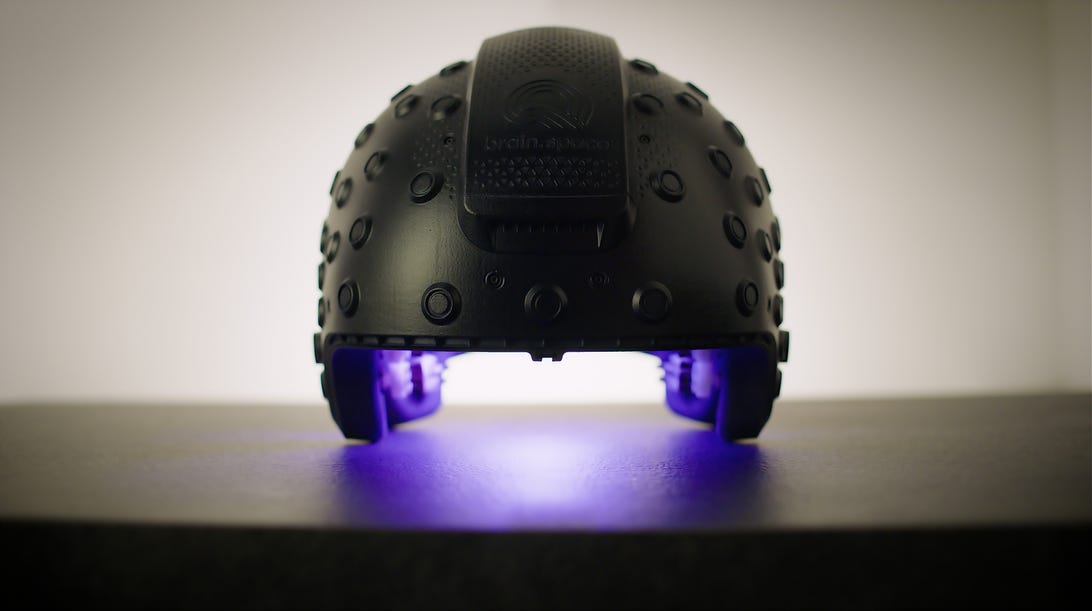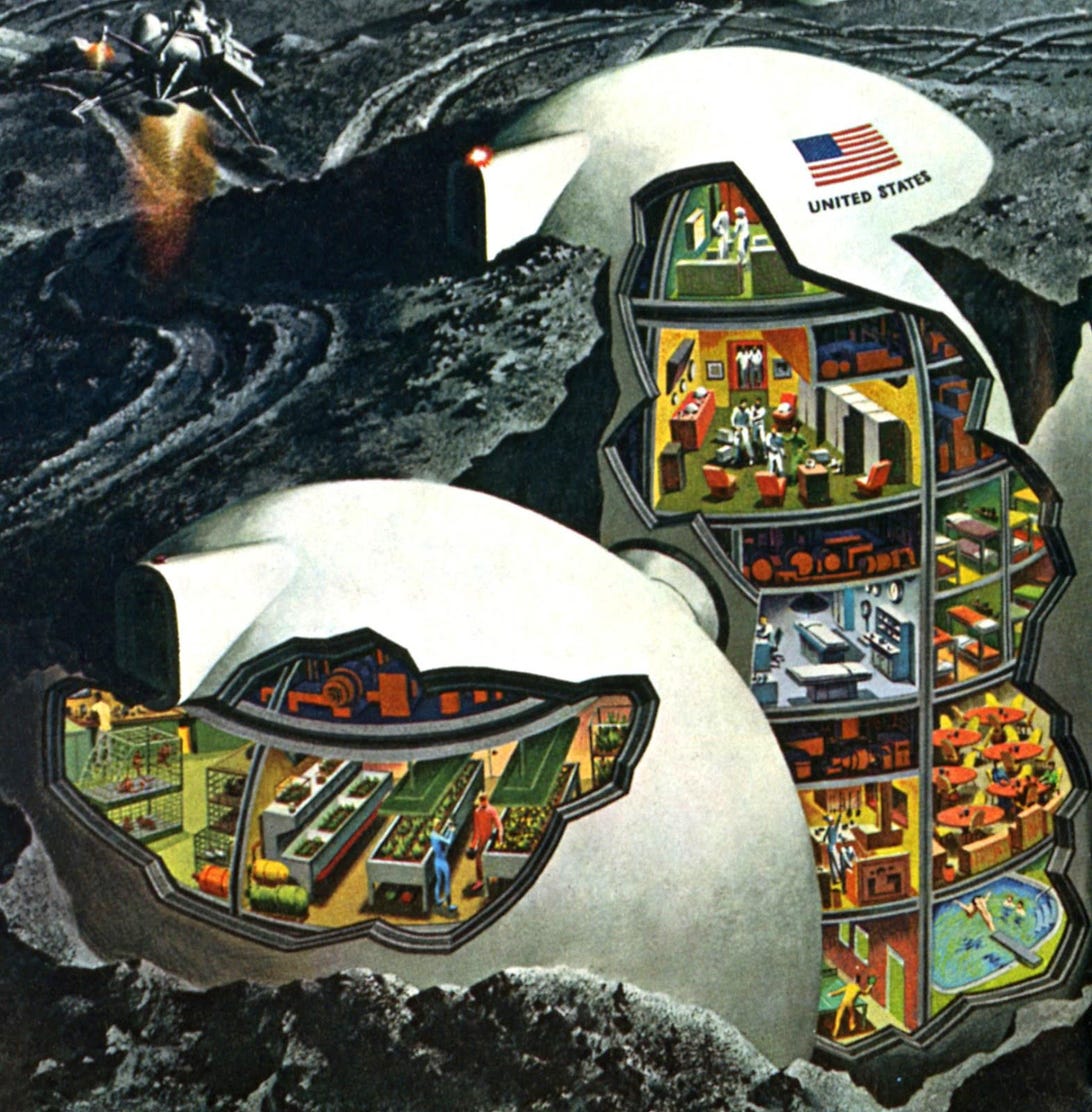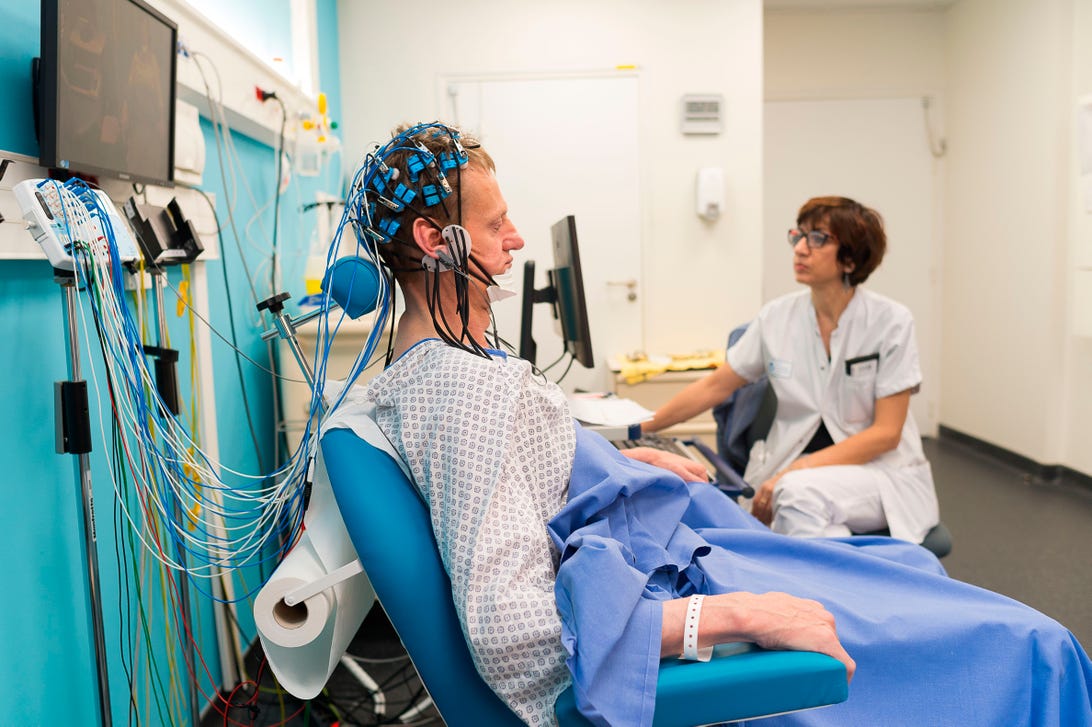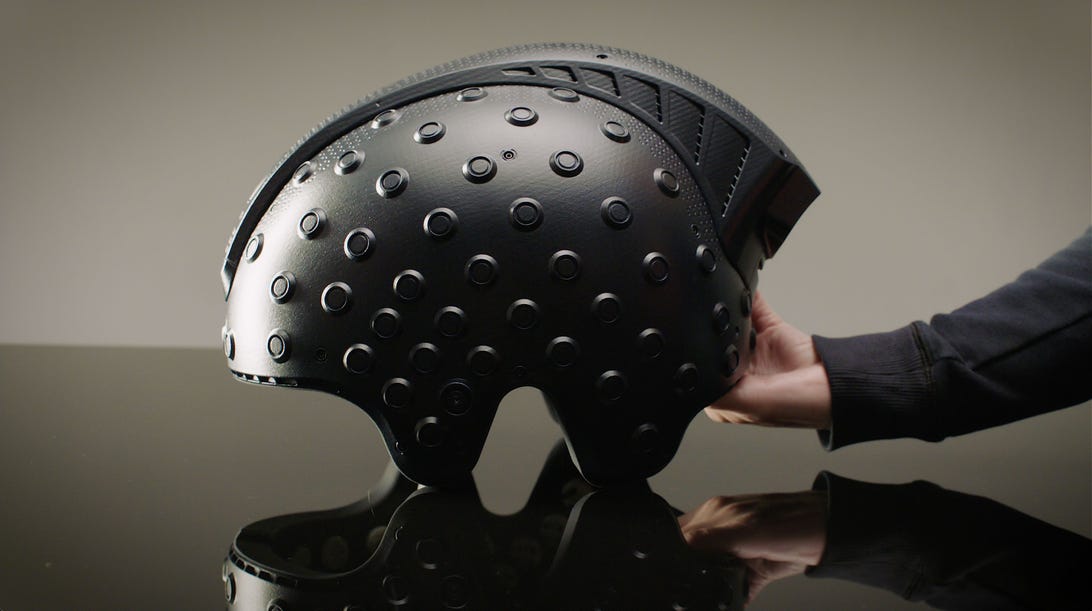

Ax-1 astronauts will have some sci-fi-looking equipment on board.
Brain.spaceFour brave humans are about to ascend into space. For 10 days, they'll call the International Space Station home as part of the Axiom-1 mission, a trailblazing endeavor to bring the first ever all-private crew onto the space-borne laboratory.
On liftoff day, scheduled for Friday, we'll witness NASA's Kennedy Space Center guiding the team through a historic countdown -- but behind the scenes, an unsung quartet of biological control centers will be on high alert, too.
The astronauts' brains will be firing away, keeping them cogent for a strenuous expedition ahead. Then, once they exit Earth's atmosphere, those crucial organs will have to continue toiling away in microgravity, which is known to alter brain tissue.
Israeli neuroscience startup Brain.space is determined to capture all the awesome, brainy details of that radical shift.
"Every organ is being measured in space -- body mass, temperature, heart rates -- everything is being measured, except for this organ," Yair Levy, co-founder and CEO of Brain.space told me over Zoom. "We're going to see if we can identify whether the brain adapts to a new homeostasis in space."
Brain.space will send a special helmet into orbit with flight members Larry Connor, Michael López-Alegría, Mark Pathy, and Eytan Stibbe on Ax-1's SpaceX Crew Dragon capsule.
It's built to mine brain activity data in near real time. (It's also undeniably reminiscent of ancient combat armor, except with a ton of electrical sensors evenly coating the inside).
Here's what it'll look like on.
Brain.spaceThe Ax-1 crew will perform cognitive tests while wearing the helmet before, during and after liftoff. Once complete, their brain data will be available for any and all researchers to study. That means experts across the globe can harness this experimental evidence, and begin decoding how the human mind transforms when confronted by the perils of microgravity.
At the moment, we don't quite know the answer to that.
"There are two enormous mysteries for humankind," Levy said. "One is space, and one is the mind."
Human brains in the void
Even though scientists have so far compiled an abundance of data about how microgravity affects the human body, most information is confined to facets like muscle mass weakening or bone density loss.
We don't have enough data about the human brain -- and that might pose a problem for our wide-eyed dreams of delving farther into the universe.
If we want to safely set up moon bases, inhabit Mars settlements or even resource-hunt on asteroids, we need to know how our minds are going to stack up against harsh space environments.

An illustration of a moon base concept from 1969.
NASAA 2021 review published in the journal Nature, for instance, says that even though we know space-based fluid dynamic adjustments and weightlessness affect our body's central nervous system, or brain processing center, "the effects of long-duration spaceflight on the [central nervous system] and the resulting impact to crew health and operational performance remain largely unknown."
"What we know from shreds of evidence," Levy explained, "is MRI scans of astronauts after long-term missions -- over months -- indicated anatomical changes. In reality, however, there is a complete lack of knowledge about what is happening to the brain during an actual space mission."
Over the years, scientists have learned a bit about how our brains change with microgravity. Although, to find detailed information, they've usually had to innovate with their experiments. Some have simulated weightlessness on the ground to see how volunteers' brains are altered, and others have performed microgravity experiments on rats. But neither of these angles offers evidence of the real thing. There's a gap in the research, and one that might've persisted, per Levy, because currently, brain scanning equipment isn't really portable enough or simple to handle.

This is what a standard EEG might look like at a clinic.
Getty ImagesMagnetic resonance imaging, or MRIs, for example, use magnetic fields and radio waves to generate detailed pictures of the brain... but they're way too big to launch into space. Electroencephalogram instruments, or EEG, sensors are much smaller, but have their own challenges.
"It measures brain activity with an electric field that is generated by neurons," Levy said, but "this process is really dependent on the expertise of the operator, and the signal quality is quite poor." Thus, it might be tough to have astronauts, who mostly aren't doctors, work an EEG and easily send brain information all the way back to Earth.
This is where Brain.space's new tech comes in. It's like an EEG, but user-friendly.
EEG 2.0
Toothbrush bristles, a computer and a microchip -- all are main ingredients for what Levy calls "the world's most efficient, cheapest and easiest to use EEG device," aka Brain.space's helmet and data collection platform.
Three of the four astronauts on Ax-1, Levy says, will take turns wearing the sci-fi-looking helmet, which holds 460 electrical sensors fitted with a bunch of toothbrush bristles. These bristles make it easier for each sensor to contact the wearer's skin for optimal brain data collection.
"We found somewhere we can source materials from, so there's a lot of ingenuity" in the hardware design, Levy said as he showed me how to plug each toothbrush bristle sensor into the helmet. "And, 'boom,'" he exclaimed, when finished. "It's that simple."

These helmets will collect brain activity data from Ax-1 astronauts before, during and after their expedition to the ISS.
Brain.spaceWhile wearing the helmet, each participating astronaut will perform computer-based cognitive tests. As those tests are conducted, the sensors will pick up neurological electrical signals at the click of a button. These signals will be recorded onto a microchip that's also embedded in the helmet, and the whole process, Levy explained, will take about 10 to 15 minutes.
Then, the crew will plug the storage chip into a computer, and Brain.space algorithms will sift through it all and turn it into easily understandable information for researchers everywhere. Each crew member will do the whole procedure three times along the full mission, Levy says.
You can see each toothbrush bristle sensor in the helmet here.
Brain.spaceAnd, to account for space-borne tests, Brain.space's cognitive exams are integrated with the ISS laptop, which will then beam chip data back to Earth. Though that last bit is a little tricky.
"We need to plan this, because we need to understand which satellites it's going to bounce through. Everything is NASA-level complicated," Levy said.
Brain mysteries beyond space
When Levy and his team started Brain.space, they had no idea they'd be looking up at the sky with NASA one day. In fact, Levy remarked that the company wasn't meant to be a hardware company that manufactures brain monitoring helmets at all.
First and foremost, "our primary objective is to help folks down here," Levy said.
The startup's ultimate desire is to provide understandable and accessible brain activity data to physicians, researchers, and even developers who are interested in building apps or products relevant to the brain.
That's why Levy says the data collection software is at the crux of their mission.
When researchers check out brain data from the Ax-1 crew, for instance, they'll run into a user-friendly application programming interface, or API. "The end goal," Levy said, "Is to make it as easy to integrate with brain activity as it is to use a Stripe API, or plug in your full fitness data from your Apple Watch."
Brain.space data collection mechanisms could alter the way we develop brain-base applications.
Brain.space"We currently operate under all privacy regulations, and the data we acquire from volunteers is completely anonymous," he noted, explaining why all the brain data can be open-source. "We collect general demographics such as age, hand dexterity – left or right – gender, and most importantly, data labeling generated by the task performed during data acquisition."
Peering into the future, Levy compares his vision of Brain.space to the evolution of our worldwide GPS network, equating navigation systems to Brain.space's data collection algorithms.
"When the iPhone got the initial GPS chipset, people were like 'Great, mapping,'" he said. "But nobody could imagine Uber, or home delivery, or online dating using geolocation."
With easily available brain data, who's to say what innovation can bring us -- whether the idea stems from a physician, video game developer, academic researcher or big data software engineer. Really, the possibilities are endless.
But right now, the team is focused on the very first big application of their technology: unveiling what happens to the human brain in microgravity.
"Nervous" is the word Levy uses when I ask how he's feeling about the upcoming launch. But he quickly follows with "pride." Brain.space's brain helmet will soon be on the ISS, helping pave the way for humans to gaze further into the universe than ever before.









 Add Category
Add Category